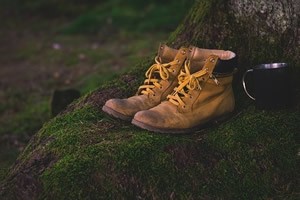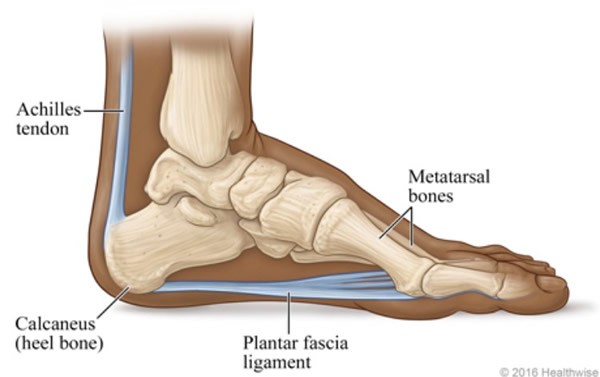 Hello and welcome to this week’s blog, all about Injury Free Hiking and Walking. A lot of people dismiss these activities as actually being a sport, and traditionally they are not. However, walking is vital to good health and is a fantastic place to start for many people new to exercise, for those returning to exercise or recuperating from an accident or injury that has prevented them from participating in their usual sport. It is also essential to those living with chronic conditions.
Hello and welcome to this week’s blog, all about Injury Free Hiking and Walking. A lot of people dismiss these activities as actually being a sport, and traditionally they are not. However, walking is vital to good health and is a fantastic place to start for many people new to exercise, for those returning to exercise or recuperating from an accident or injury that has prevented them from participating in their usual sport. It is also essential to those living with chronic conditions.
Hiking is the next level of walking, taking to uneven ground and increasing elevation, often for several hours at a time, which can really test your muscles, tendons, and ligaments.
It takes a special consideration to look at staying injury free, when it is considered to be such a basic activity by so many, but actually involves a lot of endurance ability from the cardiovascular system as well as the musculoskeletal system.
Typically, any injury could occur while hiking and walking, depending on the circumstances but I will look at the two most common. Ankle Sprains, and Plantar Fasciitis.
Ankle Sprains
 Here is a picture of some of the ligaments present in your ankle. The ligaments with the word ‘fibular’ in their name are involved in keeping the fibular bone attached to the bones of your foot. Without them, your fibular would slide right off!
Here is a picture of some of the ligaments present in your ankle. The ligaments with the word ‘fibular’ in their name are involved in keeping the fibular bone attached to the bones of your foot. Without them, your fibular would slide right off!
The word ‘talo‘, indicates the other attachment place of these ligaments, and that is the talus bone of the foot. This is the largest bone of the foot, and it is where the tibia and fibular bones contact with the foot bones. It allows articulation with the calcaneus (heel) and navicular bones.
The anterior talofibular ligament is most injured as this is the prime stabiliser of the ankle. It limits the toes pointing and the foot rotating inwards, so when a force is applied to the area and pushes the foot further inwards, it is the ligament that takes the brunt. Ligaments are incredibly strong; in fact they have the tensile strength of steel in their normal direction of action. However, when they are forced in another direction, where they are weaker, this is when issues occur.
Injury Free Hiking and Walking
When someone describes to you that they have rolled their ankle, it will likely involve the anterior talofibular ligament. When injured, the area can become red, sore, and inflamed. Walking will be uncomfortable, and rest is the prime mode of recovery.
Application of an ice pack in the immediate aftermath of injury can vastly reduce initial swelling, but it is worth noting that reduction of blood flow over a long period of time will inhibit recovery. When applying an ice pack, wrap it in a tea towel or other fabric and place over the area for a maximum of twenty minutes a few times a day for up to three days.
After the initial rest period, massage promotes blood flow to the ligaments, as they have so little blood flow already, so this is important, as well as focusing on balance and strength training.
When taking part in hiking it is important to wear the correct footwear to help prevent ankle sprains, which is why a lot of hiking footwear available are of the boot variety, because of the supportive ankle design. Take this into consideration even in the summer. While there is less risk of slipping on mud, dry dirt and stones can roll and take your foot with them.
Plantar Fascia
 Another common condition amongst hikers and walkers, plantar fasciitis, can feel debilitating because of the discomfort experienced with every step. This condition can crop up with any kind of job or activity that involves long periods of time standing or walking. It will also appear when you spend a lot of time doing one repetitive activity, such as walking. Because there is little to no difference in the movement of your muscles, ligaments, and tendons, this can lead to weakness elsewhere but also over working the muscles, ligaments, and tendons of one area.
Another common condition amongst hikers and walkers, plantar fasciitis, can feel debilitating because of the discomfort experienced with every step. This condition can crop up with any kind of job or activity that involves long periods of time standing or walking. It will also appear when you spend a lot of time doing one repetitive activity, such as walking. Because there is little to no difference in the movement of your muscles, ligaments, and tendons, this can lead to weakness elsewhere but also over working the muscles, ligaments, and tendons of one area.
The plantar fascia is a thick ligamentous tissue connecting the calcaneus to the metatarsals. Look at the picture and see the relationship between the fascia and the bones above it. This fascia acts as a spring, or a rubber band, between these bones and prevents the bones in the foot from making direct contact with the ground as well as protecting the other soft tissues in the base of the foot.
Often this condition feels worse in the morning, from overnight tightening of your muscles and tendons.
Resting from hiking and walking, or whatever irritates this condition, is the primary mode of recovery. Rolling your foot on a frozen bottle of water can bring relief as well as gentle stretching of the legs and foot. Pay special attention to your calf muscles and Achilles tendon.
Poor Footwear – Injury Free Hiking and Walking
Poor footwear causes this condition often, especially if you are wearing hiking boots and they are too tight at the top of the boot. This tightness can compress the Achilles tendon and prevents it from working efficiently. If your boots are too tight across the toe box, this can cause the plantar fascia to be less springy. If your foot is sliding about in the boot or squashed because the boot is too small, this can lead to inefficiencies in your foot.
Look at your non-hiking footwear too. It is a good idea, that if you do a lot of walking and hiking, to wear a couple of different pairs of well fitting and supportive shoes, to reduce likelihood of injury, and this goes for all your other footwear too.
Sports Massage is successful at providing relief, often resolving, plantar fasciitis. The Achilles tendon, the gastrocnemius and soleus muscles are receptive to massage and other soft tissue techniques and these being relaxed can reduce the pressure on the plantar fascia. Look at the picture again and imagine that if the calf muscles and tendons are tight, what this would do to the calcaneus bone they are attached to. It would pull on it, now look at what else would be pulled if that is the case, the plantar fascia. Sometimes this pulling knock-on effect can travel all the way up the body to your head. It is always a good idea to have a professional assessment to help ascertain the cause of your plantar fascia.
Never forget to strengthen your feet after recovering from plantar fascia.
Two exercises that are great at improving foot strength:
Towel Scrunch – seated or standing, place a towel on the floor and used your bare toes to scrunch the towel up into a ball. Repeat several times daily.
Step Lower – stand on a step as if you are going up it and support yourself to maintain balance. One foot should be completely on the step, and the other halfway off. Lower the heel of this foot down until it stops. Slowly raise it again. Allow about half your body weight to be lowered and lifted.
Remember that if anything hurts, stop.
Thank you for taking time to read my blog today, and I hope to be able to be back in clinic treating you soon. If you would like any more information please get in touch.
See you on the other side,
Chloe

